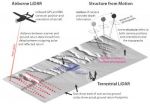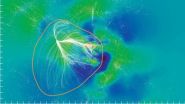(Press-News.org) The current way of diagnosing type-2 diabetes using blood glucose levels needs to be revised, research by scientists from The University of Manchester and King's College London suggests.
The findings, published in the journal PLOS ONE today (3 September), show the current method of diagnosis - using blood glucose levels - means patients are diagnosed too late so that their blood vessels may already be damaged.
Type 2 diabetes, which affects over 90% of all adults with diabetes, often leads to heart damage and blood vessel problems in the brain, eyes and kidneys. It is closely linked to increasing levels of obesity, lack of exercise, unhealthy diets and our aging population.
The study focused on young, previously pregnant women followed up in Greater Manchester after being identified as at increased, intermediate and low risk of developing type-2 diabetes. Researchers examined biochemical markers in the blood before glucose became elevated – so before the patients reached the pre-diabetes stage.
Their findings show that changes in types of blood fat metabolites - naturally occurring particles that come from and make up fats in the blood - appear to be good indicators of developing type-2 diabetes. The changes in these particles were detectable well before changes in blood glucose that now define type-2 diabetes or pre-diabetes.
Professor Kennedy Cruickshank, lead author of the study and Professor of Cardiovascular Medicine and Diabetes, in the Division of Nutrition at King's College London, formerly at The University of Manchester, said his team's findings could be important for future diagnosis and, in turn, treatments.
Professor Cruickshank said: "We found that several groups of fat metabolites, also linked to body fat, were changed in the blood, as were others including some amino acids and to some extent vitamin D, before glucose levels increased.
"Blood vessels become damaged as part of the condition, but problems in the vessels arise before high blood sugar sets in during a 'pre-diabetes' period.
"The current method of categorising type-2 diabetes solely by a patient's glucose level means that many will already have suffered blood vessel damage and will experience poorer outcomes.
"Our study overall adds weight to the argument that type-2 diabetes should not be classified as 'diabetes' as we currently understand it from just measuring blood glucose."
The authors argue that rather than concentrating purely on glucose-directed treatments, which do not improve blood vessel health, a new, quite different definition of type-2 diabetes is required, partly based on the distribution of fat metabolites in the blood in the pre-diabetes stage.
Dr Simon Anderson, co-author of the study and National Institute for Health Research Clinical Lecturer in Cardiology from The University of Manchester, said: "This long-term study of women in Greater Manchester adds to growing evidence about the major role that fats and fat metabolites play in the health of blood vessels, and in diabetes per se.
"To help clarify the metabolic conditions that lead to the development of type-2 diabetes, further assessment of the total chemicals in the blood – the metabolome - is necessary.
"In the long-term we aim to identify a biomarker or a disorder in a chemical pathway that is linked to blood vessel health and subsequent diabetes.
"Ultimately this might translate into a specific blood test to identify people at risk of type-2 diabetes early on but most importantly, it may allow advice on lifestyle modification at an earlier stage to reduce the long-term impact of diabetes."
The team say more work is now needed to validate this alternative approach to diagnosing, treating and preventing diabetes.
Work is now ongoing at King's to establish earlier treatments for blood vessels and the heart in people at risk of diabetes, while researchers in Manchester are looking at the risk of developing diabetes for children born from mothers with gestational diabetes and varying degrees of fatness.
INFORMATION: END
Is type 2 diabetes 'diabetes' as currently understood?
Current way of diagnosing type 2 diabetes needs to be revised, study shows
2014-09-03
ELSE PRESS RELEASES FROM THIS DATE:
Biodiversity in the balance
2014-09-03
A new study calls into question the evolutionary stability of an ecological explanation of biodiversity.
The study, published in the journal PLOS ONE, brings together evolutionary theory and ecology to explore one of the big questions in ecology: How is biodiversity developed and maintained?
"This is a fundamental question if we want to protect biodiversity—what exactly do we need to protect?" says IIASA Evolution and Ecology Program Director Ulf Dieckmann, who led the study together with Florian Hartig from the University of Freiburg, collaborating with colleagues from ...
Penn study demonstrates wearable sensors to detect firearm use
2014-09-03
A new study from the University of Pennsylvania demonstrates that wearable sensors could one day transform the correctional system by tracking gun use by community-based offenders, who account for a disproportionate share of fatal and non-fatal shootings.
Currently, detecting and deterring this type of crime can be challenging in the absence of reliable evidence that a particular community-supervised offender illegally used a firearm.
In the study, published this week in the journal PLOS ONE, Charles Loeffler, an assistant professor of criminology at Penn, demonstrates ...
Widely used depression drug associated with dental implant failure
2014-09-03
Alexandria, Va., USA – The International and American Associations for Dental Research (IADR/AADR) have published a paper titled "SSRIs and the Risk of Osseointegrated Implant Failure – A Cohort Study." Selective Serotonin Reuptake Inhibitors (SSRIs), the most widely used drugs for the treatment of depression, have been reported to reduce bone formation and increase the risk of bone fracture. Since osseointegration is influenced by bone metabolism, this study investigates the association between SSRIs and the risk of failures in osseointegrated implants. The manuscript, ...
Story from the Department of Energy's Oak Ridge National Laboratory, Sept. 2014
2014-09-03
To arrange for an interview with a researcher, please contact the Communications staff member identified at the end of each tip. For more information on ORNL and its research and development activities, please refer to one of our media contacts. If you have a general media-related question or comment, you can send it to news@ornl.gov.
OPTICS – Precision projectile tracker …
Rifle optical sighting systems with a 19th century heritage could blast into modern times with a laser-based bullet tracking system being developed by a team led by Slobodan Rajic of Oak Ridge National ...
Trouble starting a task? Perception of time may be the problem, study finds
2014-09-03
Completing tasks and crossing them off the ubiquitous "to-do" list is a great feeling. But what about those nagging tasks we keep putting off? What's the difference between those jobs that get completed and those that do not?
The answer may be our perception of time, according to new research by Yanping Tu, a doctoral candidate at the University of Chicago's Booth School of Business.
The study, "The Categorization of Time and Its Impact on Task Initiation," recently published in the Journal of Consumer Research, finds that people are more likely to begin a job when, ...
How much gravity is enough?
2014-09-03
TORONTO, September 3, 2014 – Keeping upright in a low-gravity environment is not easy, and NASA documents abound with examples of astronauts falling on the lunar surface. Now, a new study by an international team of researchers led by York University professors Laurence Harris and Michael Jenkin, published today in PLOS ONE, suggests that the reason for all these moon mishaps might be because its gravity isn't sufficient to provide astronauts with unambiguous information on which way is "up".
"The perception of the relative orientation of oneself and the world is important ...
Team develops new, inexpensive method for understanding earthquake topography
2014-09-03
Boulder, Colo., USA – Using high-resolution topography models not available in the past, geologists can greatly enrich their research. However, current methods of acquisition are costly and require trained personnel with high-tech, cumbersome equipment. In light of this, Kendra Johnson and colleagues have developed a new system that takes advantage of affordable, user-friendly equipment and software to produce topography data over small, sparsely vegetated sites at comparable (or better) resolution and accuracy to standard methods.
Their workflow is based on structure ...
Study sets guideline for determining effectiveness of college football training methods
2014-09-03
VIDEO:
Athletic performance varies from day to day, which can make it difficult for strength and conditioning professionals to judge whether athletes' improvements are due to effective training. Now, University of...
Click here for more information.
COLUMBIA, Mo. –Athletic performance varies from day to day, which can make it difficult for strength and conditioning professionals to judge whether athletes' improvements are due to effective training. Now, University of Missouri ...
NIH-led scientists discover HIV antibody that binds to novel target on virus
2014-09-03
WHAT:
An NIH-led team of scientists has discovered a new vulnerability in the armor of HIV that a vaccine, other preventive regimen or treatment could exploit. The site straddles two proteins, gp41 and gp120, that jut out of the virus and augments other known places where broadly neutralizing antibodies (bNAbs) bind to HIV. This newly identified site on the viral spike is where a new antibody found by the scientists in an HIV-infected person binds to the virus. Called 35O22, the antibody prevents 62 percent of known HIV strains from infecting cells in the laboratory and ...
Hawaii scientist maps, names Laniakea, our home supercluster of galaxies
2014-09-03
University of Hawaii at Manoa astronomer R. Brent Tully, who recently shared the 2014 Gruber Cosmology Prize and the 2014 Victor Ambartsumian International Prize, has led an international team of astronomers in defining the contours of the immense supercluster of galaxies containing our own Milky Way. They have named the supercluster "Laniakea," meaning "immense heaven" in Hawaiian. The paper explaining this work is the cover story of the September 4 issue of the prestigious journal Nature.
Galaxies are not distributed randomly throughout the universe. Instead, they are ...
LAST 30 PRESS RELEASES:
Danforth Plant Science Center to lead multi-disciplinary research to enhance stress resilience in bioenergy sorghum
Home-delivered groceries improve blood sugar control for people with diabetes facing food insecurity
MIT researchers identified three cognitive skills we use to infer what someone really means
The Iberian Peninsula is rotating clockwise according to new geodynamic data
SwRI, Trinity University to study stable bacterial proteins in search of medical advances
NIH-led study reveals role of mobile DNA elements in lung cancer progression
Stanford Medicine-led study identifies immune switch critical to autoimmunity, cancer
Research Alert: How the Immune System Stalls Weight Loss
Glucagon-like peptide 1 receptor agonist use and vertebral fracture risk in type 2 diabetes
Nonadherence to cervical cancer screening guidelines in commercially insured US adults
Contraception and castration linked to longer lifespan
An old jeweler’s trick could unlock next-generation nuclear clocks
Older age, chronic kidney disease and cerebrovascular disease linked with increased risk for paralysis and death after West Nile virus infection
New immune role discovered for specialized gut cells linked to celiac disease
A new ‘hypertropical’ climate is emerging in the Amazon
Integrated piezoelectric vibration and in situ force sensing for low-trauma tissue penetration
Three-hit model describes the causes of autism
Beech trees use seasonal soil moisture to optimize water uptake
How thinning benefits growth for all trees
Researchers upgrades 3-PG forest model for improved accuracy
Achieving anti-thermal-quenching in Tb3+-doped glass scintillators via dual-channel thermally enhanced energy transfer
Liquid metal modified hexagonal boron nitride flakes for efficient electromagnetic wave absorption and thermal management
Failure mechanisms in PEM water electrolyzers
Study captures how cancer cells hide from brain immune cells, shows that removing their “don’t eat me” signals stops their escape
New breakthrough in detecting ‘ghost particles’ from the Sun
Half of people arrested in London may have undiagnosed ADHD, study finds
From dots to lines: new database catalogs human gene types using ’ACTG’ rules
Persistent antibiotic resistance of cholera-causing bacteria in Africa revealed from a multinational workshop for strengthening disease surveillance
SwRI, Trinity University to synthesize novel compound to mitigate effects of stroke, heart attack
Novel endocrine therapy giredestrant improves disease-free survival over standard of care for patients with early-stage breast cancer in phase III lidERA trial
[Press-News.org] Is type 2 diabetes 'diabetes' as currently understood?Current way of diagnosing type 2 diabetes needs to be revised, study shows


